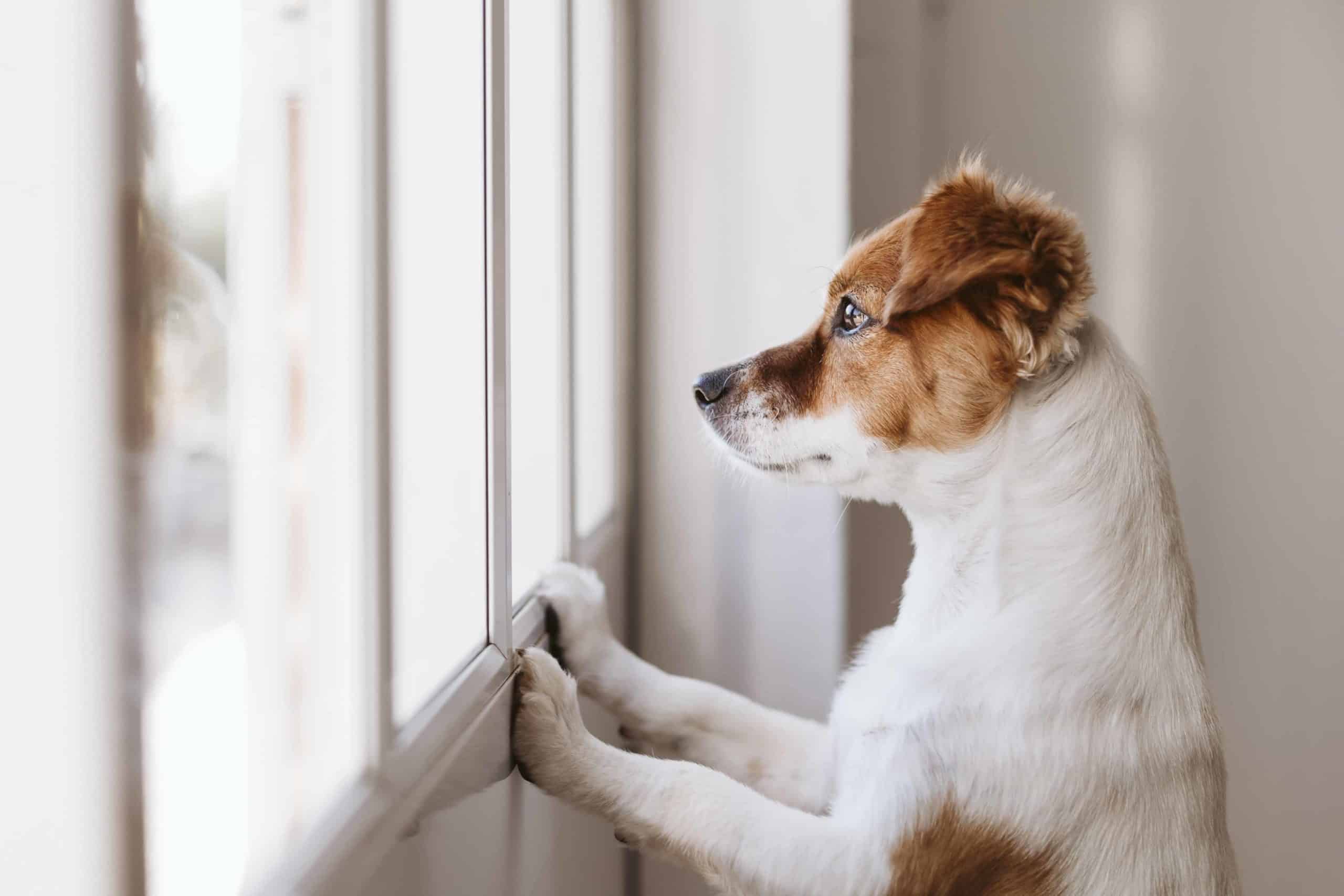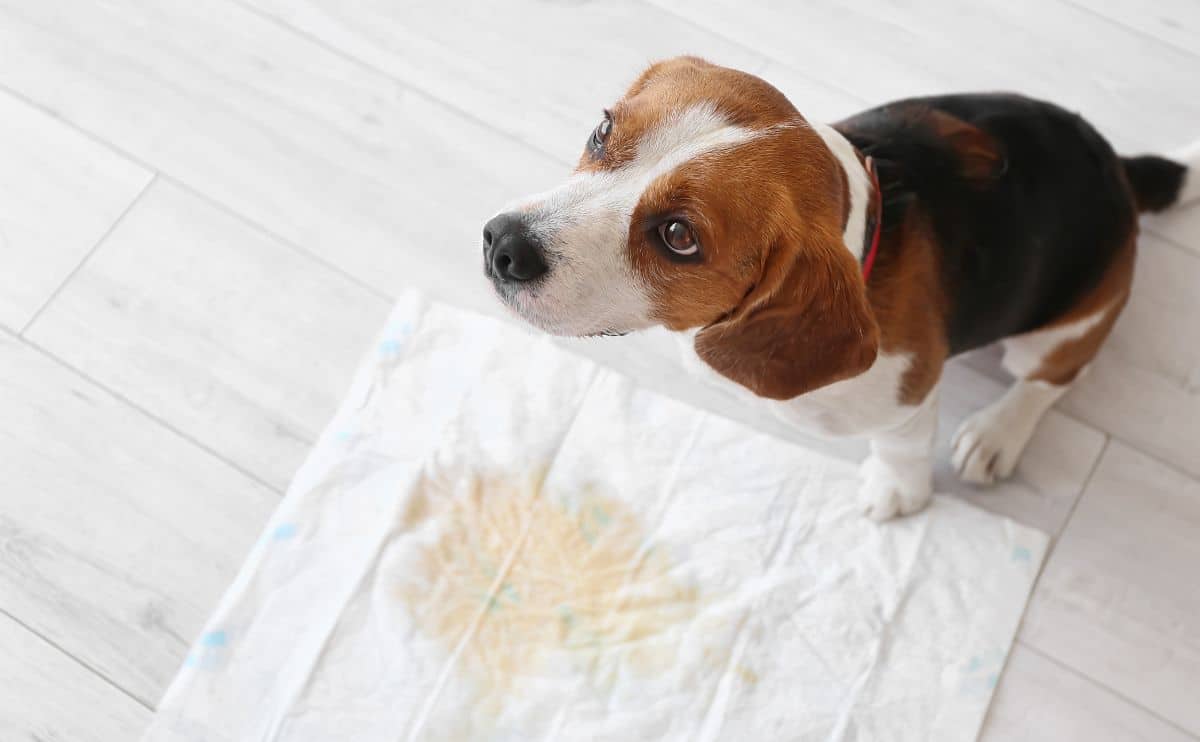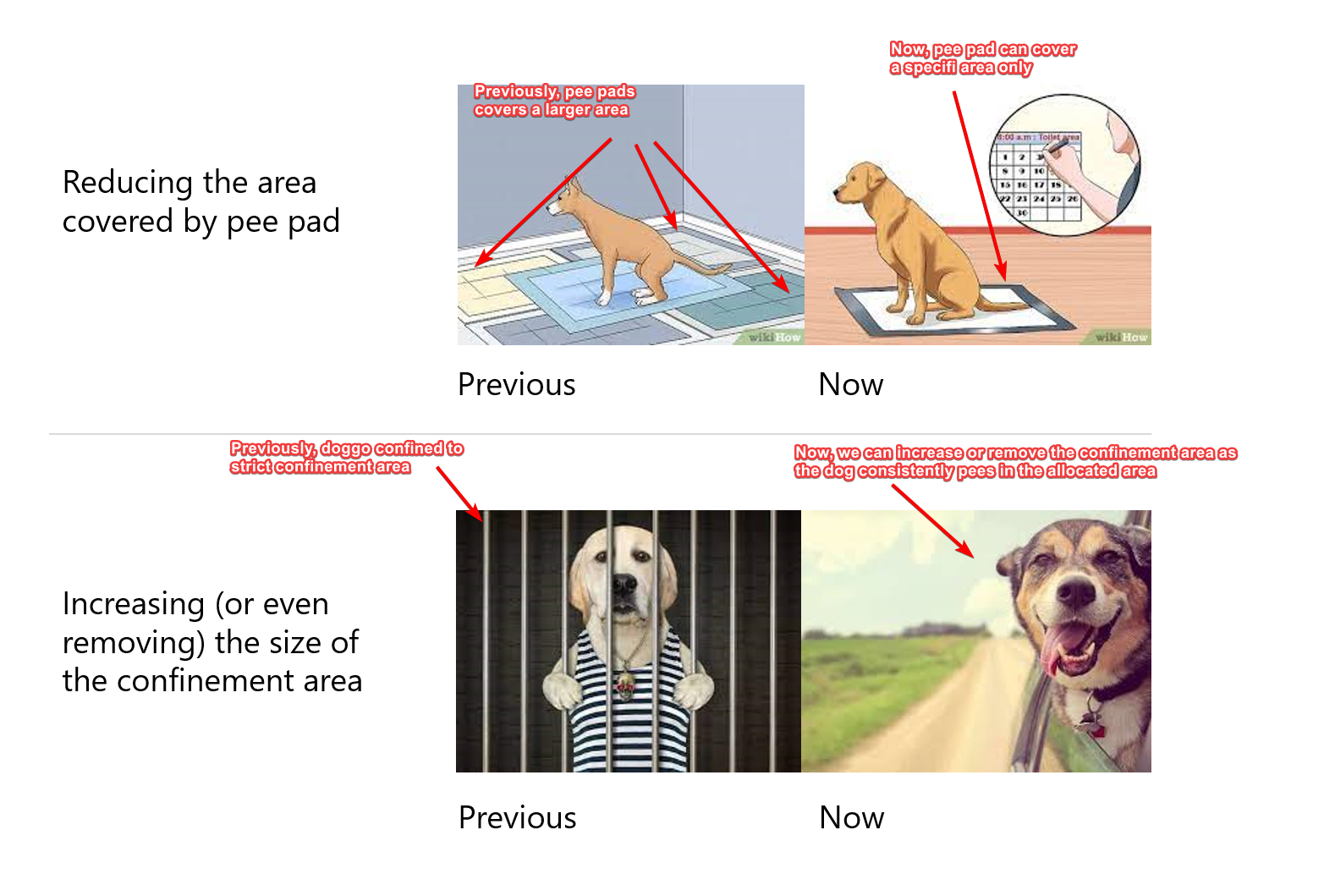Introduction
Having owned my Australian Shepherd, Storm, for 2 months now – we’ve been meeting with alot of dog owners, and exchanging ideas on how we can collaboratively live in harmony with our dogs. One of the common problems is toiletting habits.
After several discussions with dog owners, we’ve come to the conclusion that these are the optimal steps for potty training your dog.
Ofcourse, each dog is different - but the concepts and risks will remain the same. But the end goal is the same, living harmoniously with our furry counterparts ^^.
How to Potty Training Your Dog
This article provides detailed steps based on my understanding after discussing with other dog owners for effectively potty training your dog – basically consolidating the collective knowledge of all dog lovers here! By following these instructions, we can establish a consistent bathroom routine and encourage your dog to eliminate in the designated area.
Monitoring Bathroom Schedule
- Action: Record your dog’s bathroom habits to establish a routine.
- Details: Note the times when your dog typically needs to relieve themselves, such as after meals or upon waking in the morning.

For Stormy, his bathroom schedule is as follows:
- 0700 hours (+/- 1 hour)
- 1130 hours (+/- 1 hour)
- 1630 hours (+/- 1 hour)
- 2030 hours (+/- 1 hour)
Yours might be different, but with this information, we can proceed to the next steps and plan how we want to guide him to pee in his designated area.
Confinement Training
- Action: Confine your dog to a designated area during established bathroom times.
- Details: Gradually introduce confinement, using positive reinforcement to acclimate your dog to the space.
Note that when dogs are initially confined, they may exhibit signs of discomfort or fear. They may whine, or bark or even develop poor toileting habits due to the stress.

It’s our responsibility to introduce confinement to them gradually and desensitize them to it. If you are struggling to desensitize confinement, it’s worth reaching out to a professional behaviourist for advise – especially because we don’t want the dog to develop any negative association with confinement. Developing negative association with confinement is counter productive and would significantly hinder our progress. Instead, we want them to be very comfortable with confinement.
Preparation of Confinement Area
- Action: Set up the confinement area using a playpen of appropriate size.
- Details: Choose a playpen that provides enough space for your puppy to rest, play, and eat comfortably without being too large or too small.
- Action: Cover 70% of the playpen area with a pee pad.
- Details: Place the pee pad strategically to cover the majority of the playpen floor, creating a designated area for your puppy to eliminate.
- Action: Allocate 30% of the remaining space for essential items such as a bowl, water, and toys.
- Details: Position the bowl, water, and toys in the uncovered area to encourage your puppy to use the pee pad for elimination.

- Benefit: By covering 70% of the playpen area with a pee pad and placing essential items within the remaining space, you increase the likelihood of your puppy using the pad for elimination to approximately 90%. This setup effectively blocks your puppy from eliminating outside of the designated area, reinforcing proper potty behavior.
Observation and Note-taking
- Action: Observe your dog closely for signs of needing to eliminate within the confinement area.
- Details: Watch for behaviors such as sniffing, circling, restlessness, or suddenly stopping an activity. These signs indicate that your dog may need to urinate or defecate.

- Action When Signs Are Observed:
- Guide to Designated Spot: If your dog displays signs of needing to eliminate, guide them to the appropriate location within the confinement area.
- Use Verbal Cue: Use a verbal cue or command, such as “go potty,” to encourage your dog to eliminate in the designated spot.
- Positive Reinforcement: Immediately praise and reward your dog when they eliminate in the designated area to reinforce proper potty behavior.
- Redirect Attention: If you’re unable to guide your dog to the designated spot in time, quickly redirect their attention within the confinement area to prevent accidents indoors.
By observing your dog for signs of needing to eliminate and taking appropriate action within the confinement area, you can effectively guide them to the designated location for bathroom activities. For example, you may want them to eliminate in a specific spot within the confinement area. This proactive approach helps reinforce proper potty behavior and minimizes accidents indoors during the potty training process.
Reinforcement and Rewards
- Action: When your dog achieves the objective of eliminating in the designated spot, it’s crucial to provide timely reinforcement.
- Details: Upon successful elimination on the pee pad, seize the opportunity to deliver a significant reward—this is the jackpot moment! Employ a cheerful tone of voice to immediately praise your dog and reinforce the desired behavior. Rewards such as treats, toys, or playtime serve as powerful motivators to solidify proper potty habits.

Continuous Monitoring and adjustements
As always, handling our beloved furry pal is never an easy job. There are no shortcuts (at least none without negative implications), to having exhibit desired behaviours.
Potty training, is alot of hardwork and will require consistent management throughout. The sub-sections below are the remaining steps discussed with other dog owners, on how they ensure that they work that they have put in does not regress!
Gradual Transition: Pee Pads Removal and Confinement Area Expansion
- Action: Gradually remove pee pads from areas where your dog doesn’t eliminate while simultaneously expanding the confinement area.
- Details: As your dog demonstrates consistent elimination in the designated spot, initiate the gradual removal of pee pads from unused areas. Simultaneously, expand the confinement area to provide your dog with more space while maintaining supervision to prevent accidents. This step reinforces proper potty behavior and promotes increased confidence and independence in your dog’s bathroom habits.

Consistency and Patience
- Action: Maintain consistency with the established routine and remain patient throughout the training process.
- Details: Avoid punishing your dog for accidents, as this can hinder progress.
Prompt Cleanup of Accidents
- Action: Clean any indoor accidents promptly with an enzymatic cleaner.
- Details: Use cleaners specifically designed to eliminate odors, as residual scents can attract dogs back to the same spot.
Monitoring Progress and Adjustments
- Action: Continuously monitor your dog’s progress and adjust training methods as needed.
- Details: Be flexible and adapt your approach based on your dog’s responses and behaviors.
Risks of Positive Punishment in Potty Training
Positive punishment techniques, such as scolding, hitting, or using aversive tools like a “pet corrector” hiss spray, can have adverse effects on potty training.
- Scolding: Verbally reprimanding your dog for accidents.
- Hitting: Physically striking your dog in response to accidents.
- Pet Corrector Hiss Spray: Using a canister that emits a hissing sound to startle or intimidate the dog.
These aversive methods may cause your dog to associate peeing in your presence with fear, making it difficult to train them to eliminate in a specific area.
What, Why?!! Isn’t that opposite of what the objective we are trying to reach ><!

This confusion arises because positive punishment does not clearly communicate the desired behavior to the dog. To mitigate this risk, focus on positive reinforcement methods that clearly indicate where your dog should eliminate, ensuring better understanding and compliance.
Steps Taken for Storm, Conclusion
With this nice article laid out – just wanted to give a disclaimer that this is simply the collective knowledge from all dog owners (and NOT a personal experience for myself and Storm). Information was curated based on informal discussions with fellow dog owners – and most of them share the same consensus!
I have to admit, that the steps mentioned in this article is alot of work - but it has proven to be successful based on other dog owners experience.
For Stormy – we did not take the route of potty training him indoors. Simply because of the level of effort needed. We had to choose our poison, so we decided to take him out every single time he needs to pee, so he pee’s outdoors.
So there you go, more than one road to Rome, to each dog owner their own – hope this article helps you guys. Helped me to understand the level of effort required to potty train indoors for sure. Just writing it down got me intimidated - so I’ll stick to walking my fellow Storm out 4x a day.

Peace and Love
Shafik Walakaka